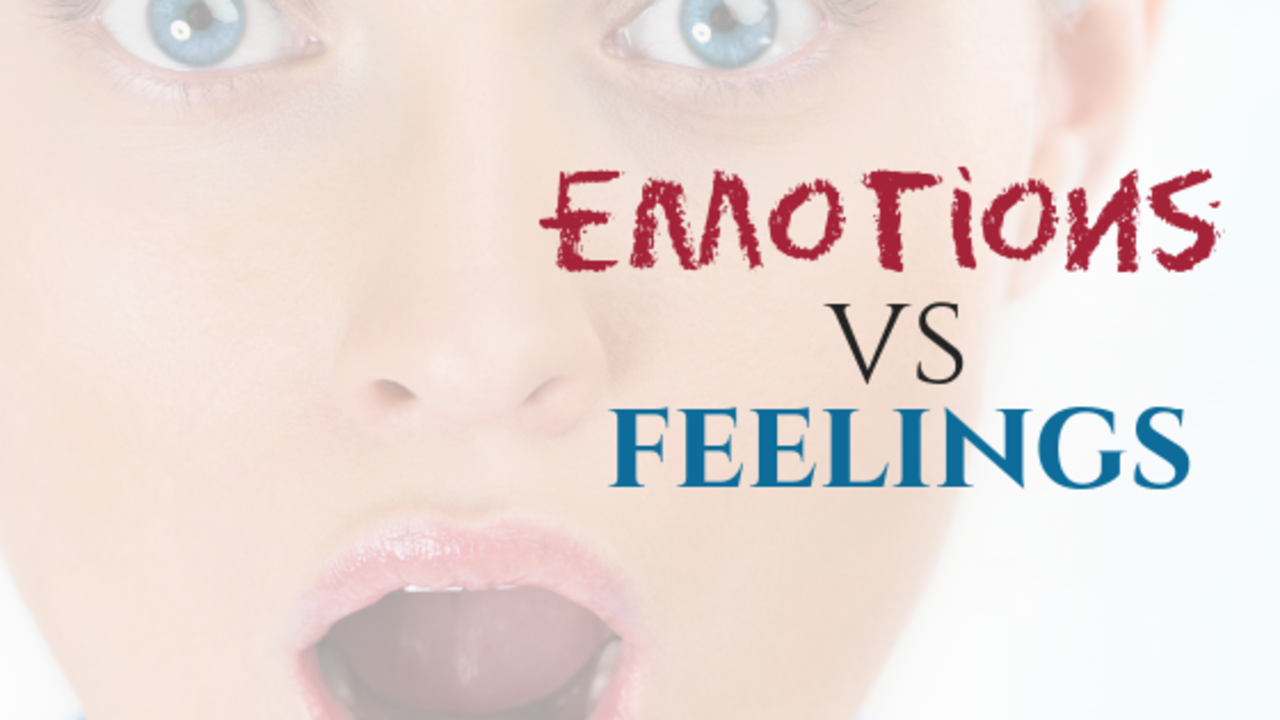Emotions vs Feelings

When trying to lose weight, we tend to focus solely on the physical aspects of health, namely food, exercise and sometimes, sleep. Those are absolutely important. And, there are two other elements that are equally important: thoughts and emotions.
We are overweight because we overeat. And, every overeating experience (or any time we are doing something "against our own will") is driven first by the mental and emotional components. And, just as there is a science to diet and exercise, there is also a science behind managing our mental and emotional health.
And before we can apply that science, we have to be aware of it. We have to grow our self awareness and get to know ourselves better. We need to know the difference between our thoughts and emotions. And, to do that, we have to be clear on what an emotion is in the first place.
Emotions are physical sensations in our bodies created by thoughts in our brains. We identify those different sensations with words like: anger, love, joy, sorrow and hate. We can literally feel those emotions. They can feel like butterflies in our stomachs, a clenched jaw, or a rapid heart beat. The connection between the physical sensation, or feeling, and the emotion is sometimes hard to separate. We can obviously experience physical sensations without regard to our emotions. We can touch a hot stove, feel the wind, or hold a loved one's hands. These feelings are simply physical sensations that our nervous system relays to our brain. So a feeling is a sensation in your body caused by another physical phenomenon-to include your thoughts. And, an emotion, is a physical reaction in your body, caused by your thoughts.
A great example of this is watching a scary movie. You know that none of it is real but you still might have a queasy feeling in your stomach or even be sweating. Those physical sensations (feelings) are literally caused by your thoughts about the movie. Those sensations are emotions.
Even though the cause of emotions are different than the cause of a feeling, they can feel like the same thing. But they aren't. And, being able to recognize the difference is the first step in understanding why you are overeating. It is essential to know the difference between a feeling and an emotion because, ideally, we only want to eat due to true physical hunger, not because of an emotion.
So, how do you do this?
You stop and listen. Pay attention. Even if you eat mostly “healthy” foods, if your weight won’t drop, overeating is a likely culprit. The next time you have an urge to eat, pause. What are you actually feeling physically? Is it a physical hunger or an emotional one? If it is physical, where do you feel it? If it is an emotion, what is the name of it? To help determine if you are physically or emotionally hungry, ask yourself if you would be willing to eat a plain chicken breast or plain tofu to satiate your hunger. If the answer is no, then you are not physically hungry. Do not eat. Instead, feel the feeling.
Feeling the feeling isn't an easy thing to do. It sounds fairly simple-and it is. You just have to sit there and feel it. But, when you are in the moment and it's time to feel the feeling or reach for your favorite comfort food (or drink), the simple isn't so easy. If you take the time to just become aware and notice the difference between your feelings and emotions, that is an incredible first step. Just notice. Be a compassionate observer and see what is going on.
You absolutely have to have the right "diet" for your optimal health. Chances are, you have a pretty good idea what that is (if not, check out this free checklist) You cannot have a healthy body without the right food. But know that a it isn't just about the food. If you can increase your personal awareness of your thoughts and emotions around food, then choosing the "right" food won't be about willpower, it will just be a natural selection.